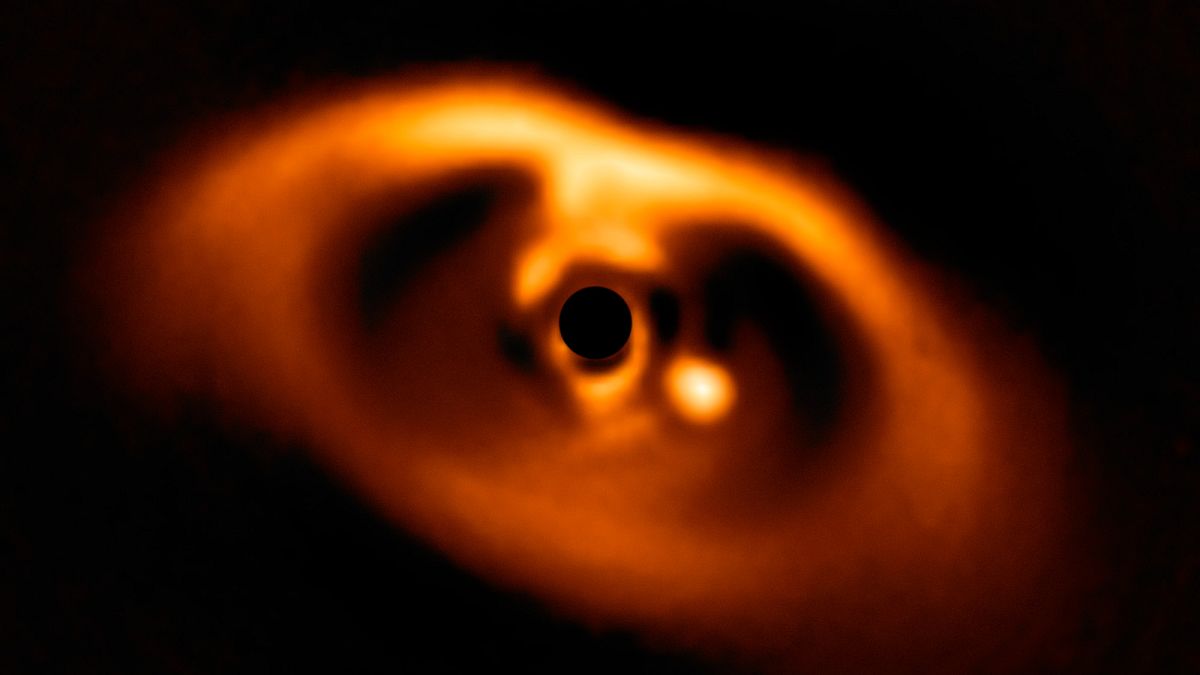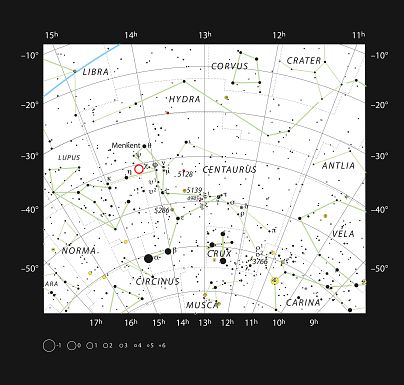It's a baby photo of sorts — only this alien world is anything but cute and cuddly.
With help from one of Earth's most powerful telescopes, an international team of astronomers has snapped a spectacular snapshot of a newborn planet emerging from the disk of gas and debris surrounding its host star.
The first-of-its-kind image — included in new research to be published in the journal Astronomy & Astrophysics — shows an alien world known as PDS 70b that orbits a dwarf star some 370 light-years from Earth in theconstellation Centaurus.
This is a baby picture of sorts, but PDS 70b isn't especially cute or cuddly. It's a gas giant more massive than Jupiter and, with a surface temperature of roughly 1,000 degrees Celsius (about 1,800 degrees Fahrenheit), it's hotter than any planet in our solar system.
And if the picture itself is unique, it's what it shows that has the astronomers excited.
"This confirms our picture of planet formation, namely that planets, while accumulating material from their environment, carve a gap in the disk," Miriam Keppler, an astronomer at the Max Planck Institute for Astronomy in Heidelberg, Germany, and the leader of the team, told NBC News MACH in an email. "While discovering how planet formation takes place around other stars, we learn as well about the history of our own solar system."
The image shows PDS 70b as a bright yellowish blob near its host star, PDS 70, which is obscured by a black disk known as a coronagraph that astronomers use to keep a star's bright light from washing out much dimmer planets. In reality, PDS 70b lies some 3 billion kilometers (about 1.86 billion miles) from PDS 70, or roughly the distance from Uranus to the sun.
Other images have shown planetlike features in the disks around their host stars, but it was always hard to tell for sure that the features represented actual planets.
"This is the first time we've been able to see a planet embedded in a gas disk around a young star," Heather Knutson, a professor of planetary science at Caltech in Pasadena, California, told MACH in an email. "Gas giant planets like this one form on a timescale of several million years, but they are hidden from view during most of this period due to the presence of the gas disk."
The image was captured by SPHERE, a planet-hunting instrument attached to the European Southern Observatory's Very Large Telescope in Chile's Atacama Desert. Six one- to two-hour observations were made of the planet and its host star between 2012 and 2018, Keppler said in the email. Algorithms were then used to remove the bright light of PDS 70, which is about 5,000 times brighter than PDS 70b and which otherwise would have overwhelmed the light from the planet.
"The technique the scientists used is ingenious, pulling the faint image of the planet out of the surrounding image of the swirling protoplanetary disk," Jay Pasachoff, a Williams College astronomer who wasn't involved in the new research, told MACH in an email.
"It's a very interesting and pretty convincing result — a solid detection," Bruce Macintosh, a physicist at Stanford University in Palo Alto, California, told Science.



